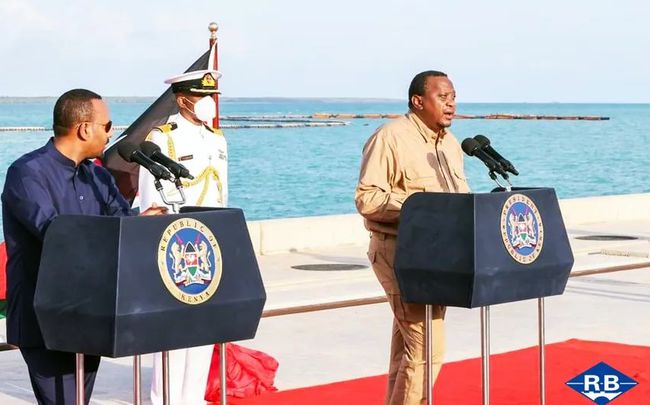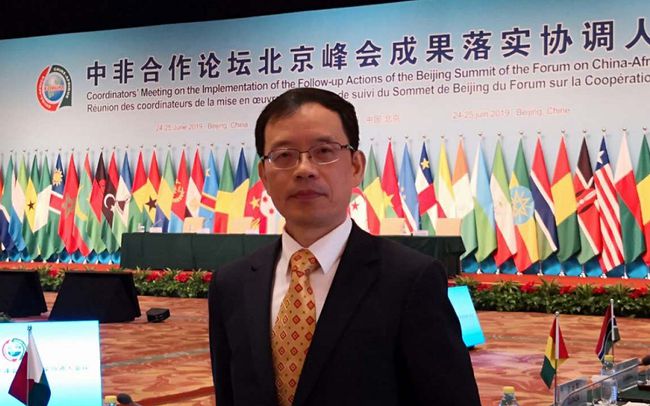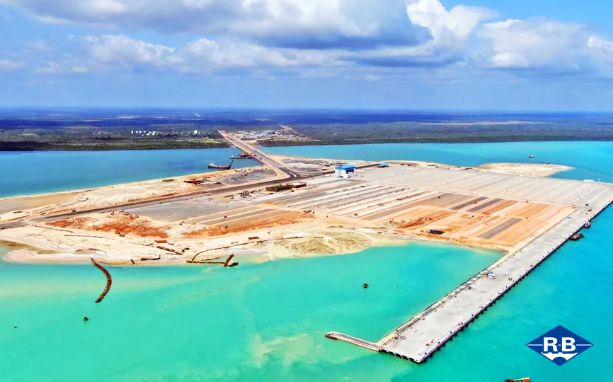December 12
A few days ago, Kenyan President Uhuru Kenyatta and Ethiopian Prime Minister Abi Ahmed Ali came to visit the berth 1-3 project in Port Ramu, Kenya, which was contracted by Chinese enterprises.
Kenyatta and Abi learned about the construction of the project in detail on the spot and fully affirmed the progress of the project construction. How important is the project, and why do African leaders visit the project together?
Port Lamu: an important part of Kenya’s Vision 2030
Located at the northern end of the Kenyan coastline, the port of Ramu has 32 berths planned, which is an important part of Kenya’s Vision 2030. The project is contracted by China Communications Construction.
The 1-3 berth project includes the construction of three berth terminals in the first phase of Lamu Port. The total length of the wharf is 1,200 meters, 14.6 million cubic meters are blown in, and the wharf yard is 1.15 million square meters.
Three 12,000 standard container ships can be parked at the same time.
Aerial photography of the berth 1-3 project in Port Lamu
Kenyan President: The Port Lamu Project is a new seaway for East African countries.
Kenyan President Kenyatta said that the Port Ramo project is an important part of the construction of the “Port Ram-South Sudan-Ethiopia Transport Corridor”, which will greatly promote regional trade and economic and social development and provide a more reliable and more reliable and more Convenient access to the sea.

Kenyan President Uhuru Kenyatta also said that the government planned to build an industrial city in Ramu.
President Kenyatta reiterated Kenya’s commitment to the development of transport corridors that will provide a full range of seamless connectivity for the people to promote intraregional trade and logistics development and will further strengthen regional integration in East Africa.
Prime Minister of Ethiopia: Port Lamu is conducive to regional economic integration
Ethiopian Prime Minister Abi said that Ethiopia’s economic and manufacturing development potential is huge. When the completion of the port of Ramu, it will provide a strong guarantee for Ethiopia’s commodity imports and export, which will help accelerate regional economic integration.
From the speeches delivered by the leaders of the two countries during the on-site inspection, it is not difficult to find that both countries want to strengthen the economic development of the East African region.
According to local media reports in Kenya, the leaders of the two countries promised to strengthen bilateral relations between the two countries in other occasions to further develop trade potential. The two countries have a similar vision in maintaining a free and open trade and investment environment. The volume of trade between the two countries still has great potential for growth.
After recognizing the importance of strategic partnerships and the development of joint infrastructure projects, Kenya and Ethiopia will further strengthen their close ties.
“The Belt and Road Initiative” helps the development of the East African region
Some experts said that backward infrastructure construction remains the main obstacle to investment and economic growth in East African countries.
In this regard, experts suggested that the East African economies must accelerate the pace of integration and continue their efforts to remove various forms of barriers to allow the free movement of people, capital and services between countries in the region.

Liu Hongwu, dean of the African Research Institute of Zhejiang Normal University, said that with the continuous implementation of the Belt and Road Initiative in African countries, the smooth opening of the Mongolian-Nei Railway and the Yaji Railway, and important steps have been taken in interconnection in the whole East African region.
Special statement: The above content (including pictures or videos) is uploaded and published by users of the self-media platform “NetEase Number”. This platform only provides information storage services.
Note: The above content (including pictures and videos, if any), is uploaded and posted by a use R of NetEase Hao, a social media platform that only provides information storage services.



